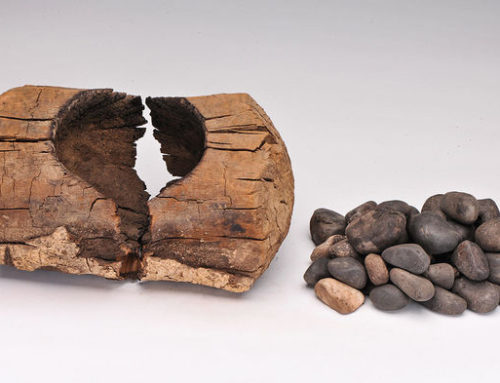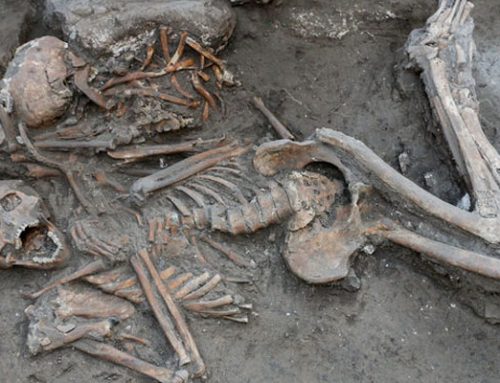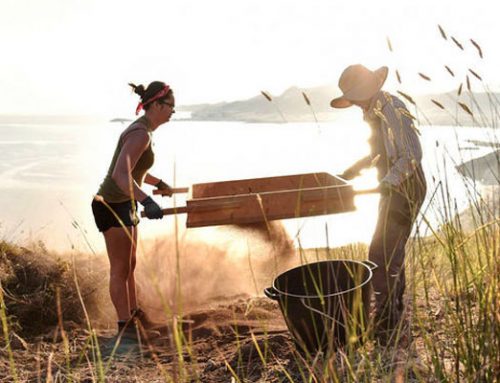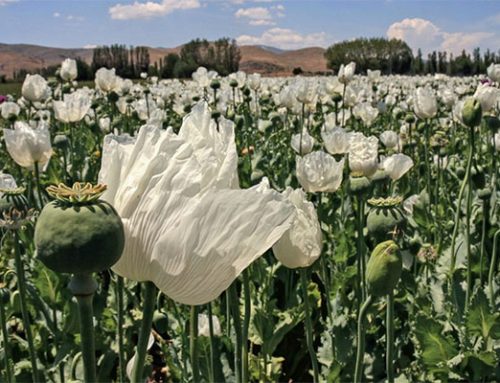Archaeologists are revealing the “invisible exports” of the world’s first civilizations: textiles, silk, and stone shipped to ordinary people rather than elites.
As long as there have been humans, there has been trade. Long before animals were domesticated and agriculture took hold, people moved prized objects over long distances. But trade in gemstones and other prized goods has generally been seen as playing only a minor part in the emergence of civilization.
Now archaeologists are finding a more important role for trade at the start of the 2nd millennium B.C.E., when the first complex societies took hold across the Old World. “Most of our focus on trade in the Bronze Age has been on exotic, high-value goods,” says archaeologist Monica Smith of the University of California, Los Angeles. There is growing evidence that more ordinary goods—ranging from textiles to food—were transported over long distances, Smith and others said at the recent Society for American Archaeology (SAA) meeting, held in Atlanta, Georgia, from 22 to 26 April. That network, connected in part by mobile pastoralists or nomads, may have played an important role in encouraging the growth of the world’s first cities, as well as mercantile classes, standardized measures, and other aspects of life we take for granted in our globalized economy.
During the start of the 2nd millennium B.C.E., the market for precious goods such as lapis lazuli boomed from Central Asia in the north to the Persian Gulf in the south, and from Mesopotamia in the west to the Indus in the east (see map). Such durable goods were often passed on or buried, and so are visible to archaeologists.
Until recently, however, there has been little data on trade in more ordinary and degradable objects, such as textiles. But scholars who examine Mesopotamian cuneiform texts have long puzzled over hints of widespread trade in common goods as far back as 2500 B.C.E. Using new methods of analysis, researchers are now picking up traces of what they once called “invisible exports.” In recent years they have found evidence, for example, that linen, wool, and hemp were shipped from the Indus civilization in today’s Pakistan and India to Shahr-i Sokhta, a former city in eastern Iran. In a recent issue of Archaeometry, Harvard University archaeologist Irene Good demonstrated that silk made in the Indus (centuries before there is evidence for it in China) made its way as far north as Afghanistan and as far east as the Deccan plateau. Fabric impressions, knives likely used for cutting carpet fibers, and images showing sophisticated patterns in clothes point to textiles as an important export of the Indus civilization until it began to dissolve around 1800 B.C.E. And to the north, in today’s Afghanistan and Turkmenistan, large settlements that were part of the Oxus civilization, which flourished from roughly 2000 to 1700 B.C.E., imported a host of goods. “It is hard to imagine the immense amount of raw stone, metal, and other production materials which had to be brought into the desert oases,” says archaeologist Fredrik Hiebert of the National Geographic Society in Washington, D.C., who presented at the SAA meeting. “It represents interregional exchange to a level not previously seen.”
How were these goods moved? In Mesopotamia, Assyrian traders left behind texts detailing their business. But some archaeologists are also turning their attention to the shadowy role of nomads.
Nomads were once thought to have grown numerous only with widespread domestication of the horse across Eurasia, well into the 2nd millennium B.C.E. But Michael Frachetti of Washington University in St. Louis, Missouri, has found evidence that mobile pastoralists thrived as early as 2460 B.C.E. in eastern Kazakhstan—800 years earlier than once thought. In an SAA presentation, he asserted that such sheep and goat herders played a key role in transmitting innovations during the Bronze Age.
Nomads could carry large quantities of light goods such as textiles over long distances as part of their regular movements. Rather than an organized system controlled by a powerful king or merchant class, trade in this period may have depended in large part on such pastoralists who left little behind in the archaeological record. “They are the agents of the networks—the Web brokers of their world,” says Frachetti. Solid evidence of this has yet to come to light and may be hard to come by. But Hiebert agrees that pastoralists likely played a critical role in connecting urban societies like the Oxus; he found evidence that the Oxus people turned to the growing pastoral populations as both a market and source of goods after the Indus civilization collapsed.
And where there were few pastoralists or independent merchants, there may have been little trade. During the early 2nd millennium B.C.E., few pastoralists roamed between Mesopotamia and Egypt, and the civilizations apparently had virtually no interaction, says Smith. Meanwhile, trade between Mesopotamia and the Indus was steady despite the longer distances involved.
Smith further suggests that ancient peoples may have seen goods such as ceramics and flints as throwaway items and viewed “perishable” textiles as both valuable and durable. Viewed from that perspective, the Mesopotamian rug may have entranced an Anatolian homemaker—and spurred civilization at the same time.
Science-2009-Lawler-Going_the_Distance_to_Uncover_The_Roots_of_Trade_in_the_Near_East-717.pdf




